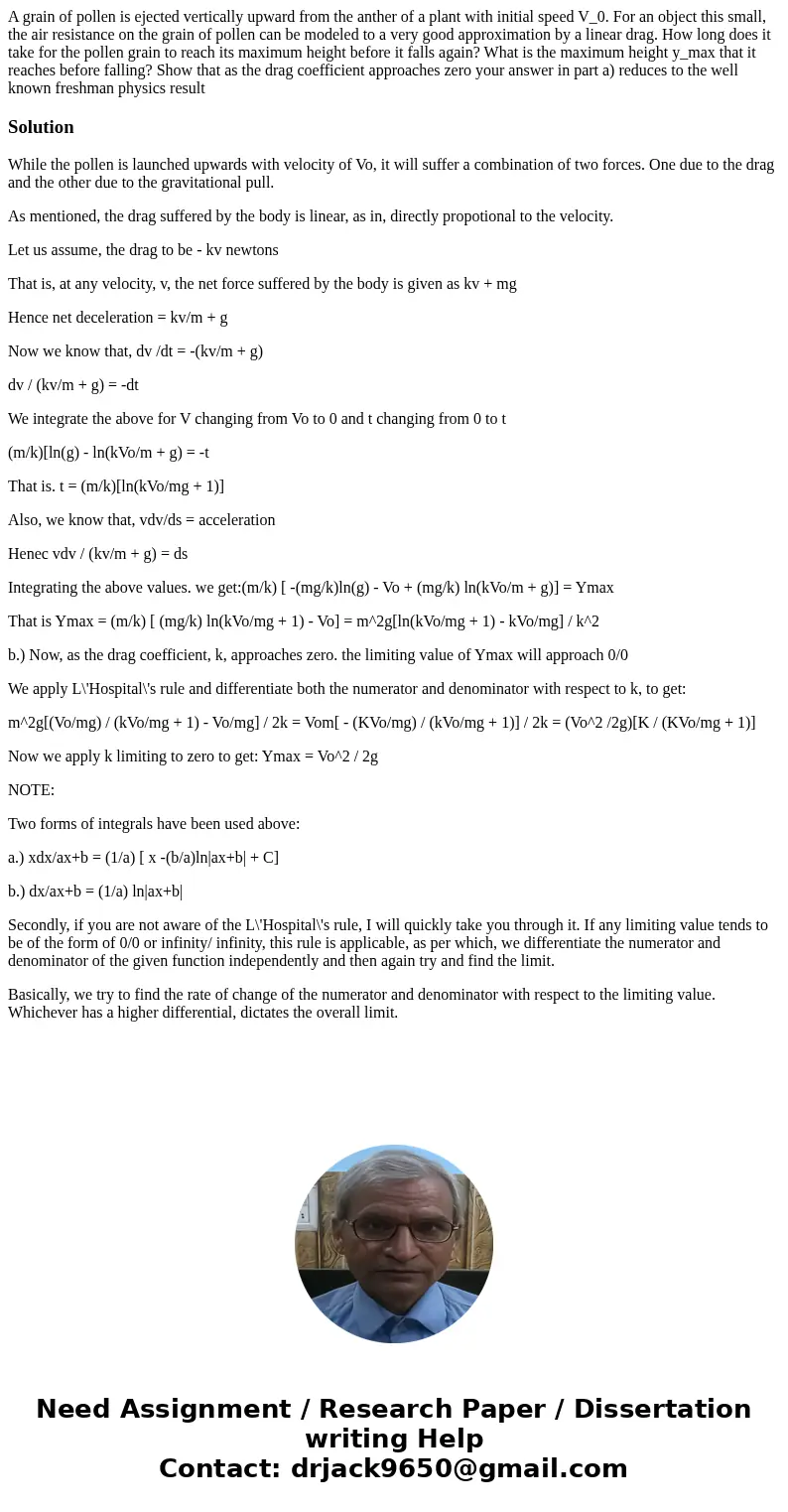A grain of pollen is ejected vertically upward from the anth
Solution
While the pollen is launched upwards with velocity of Vo, it will suffer a combination of two forces. One due to the drag and the other due to the gravitational pull.
As mentioned, the drag suffered by the body is linear, as in, directly propotional to the velocity.
Let us assume, the drag to be - kv newtons
That is, at any velocity, v, the net force suffered by the body is given as kv + mg
Hence net deceleration = kv/m + g
Now we know that, dv /dt = -(kv/m + g)
dv / (kv/m + g) = -dt
We integrate the above for V changing from Vo to 0 and t changing from 0 to t
(m/k)[ln(g) - ln(kVo/m + g) = -t
That is. t = (m/k)[ln(kVo/mg + 1)]
Also, we know that, vdv/ds = acceleration
Henec vdv / (kv/m + g) = ds
Integrating the above values. we get:(m/k) [ -(mg/k)ln(g) - Vo + (mg/k) ln(kVo/m + g)] = Ymax
That is Ymax = (m/k) [ (mg/k) ln(kVo/mg + 1) - Vo] = m^2g[ln(kVo/mg + 1) - kVo/mg] / k^2
b.) Now, as the drag coefficient, k, approaches zero. the limiting value of Ymax will approach 0/0
We apply L\'Hospital\'s rule and differentiate both the numerator and denominator with respect to k, to get:
m^2g[(Vo/mg) / (kVo/mg + 1) - Vo/mg] / 2k = Vom[ - (KVo/mg) / (kVo/mg + 1)] / 2k = (Vo^2 /2g)[K / (KVo/mg + 1)]
Now we apply k limiting to zero to get: Ymax = Vo^2 / 2g
NOTE:
Two forms of integrals have been used above:
a.) xdx/ax+b = (1/a) [ x -(b/a)ln|ax+b| + C]
b.) dx/ax+b = (1/a) ln|ax+b|
Secondly, if you are not aware of the L\'Hospital\'s rule, I will quickly take you through it. If any limiting value tends to be of the form of 0/0 or infinity/ infinity, this rule is applicable, as per which, we differentiate the numerator and denominator of the given function independently and then again try and find the limit.
Basically, we try to find the rate of change of the numerator and denominator with respect to the limiting value. Whichever has a higher differential, dictates the overall limit.

 Homework Sourse
Homework Sourse